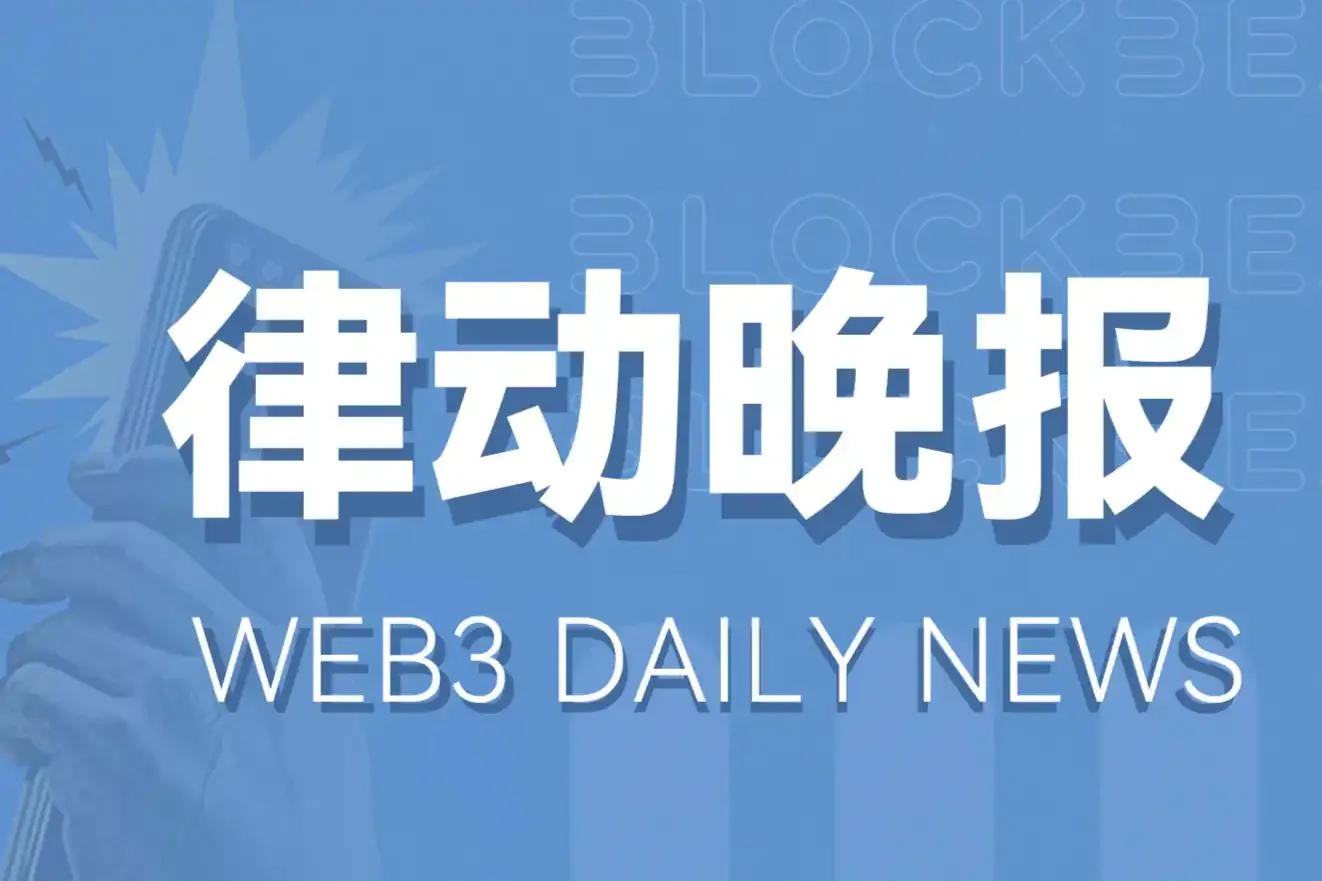Written by: Danny @IOSG
TLDR;
The on-chain prediction market is booming, and oracle technology presents the best infrastructure-related opportunities. As the core of the settlement mechanism, oracles determine what themes prediction markets can support and whether they can operate correctly and efficiently.
Currently, Polymarket's oracle is dominated by UMA, supporting subjective prediction markets that account for 80% of the market size, while Chainlink is introduced to settle the remaining 20% of price markets. Pyth is brought in to solve the issue of on-chain data for Kalshi's prediction market, while other oracle solutions mainly focus on AI.
As the only subjective settlement solution, UMA has established a good barrier in terms of product and operational experience. However, there are still issues with long settlement times and manipulation by large players, which essentially limits prediction markets like Polymarket from exploring new market types. This creates space for new solutions, including the introduction of AI agents, addressing manipulation issues, continuous/combinatorial market oracles, permissionless/long-tail market oracles, and event-driven DeFi integrations for prediction markets.
Background
Crypto has entered the application era, where infrastructure projects from the previous era have exploded due to empowering applications. Memecoins have driven Dex infrastructure, AI agents have driven Tee infrastructure, and Yield has driven DeFi infrastructure, while the rapidly growing prediction markets may drive oracle infrastructure.
Prediction markets have become a new growth engine for Crypto. From 2024 to 2025, there has been a qualitative change from niche experiments to mainstream product-market fit applications:
During the 2024 U.S. presidential election, Polymarket's trading volume surged from $73 million to $2.63 billion (a 48-fold increase), while Kalshi reached $1.97 billion (a 10-fold increase).
The overall prediction market has reached a cumulative trading volume of $15.7 billion. The parent company of the New York Stock Exchange, ICE, invested $2 billion in Polymarket, and many well-known hedge funds have entered prediction market trading or are exploring ways to participate.
On the regulatory front, the CFTC approved Kalshi's election contracts, while Polymarket plans to re-enter the U.S. market in a compliant manner through the acquisition of QCEX, in the form of a mobile app. Polymarket has hinted multiple times at the potential of its token and the Crypto ecosystem.
Various factors will act as catalysts, and the explosion of prediction markets is undoubtedly on the horizon.
Prediction markets can be divided into two categories: subjective questions, which focus on political, cultural, economic, and sports news events, such as presidential elections and World Cup championships. These are defined through natural language for the questions and results, with some conclusions being somewhat subjective, such as "Will Zelensky wear a suit?" - what qualifies as a suit.
The other category is price markets, similar to binary options products for cryptocurrencies/stocks, but in a simpler and more understandable format, such as "Will the price of BTC reach $XXX at a certain time?"
Currently, UMA and its optimistic oracle are the only providers for subjective market settlements. There are no other solutions for any decentralized, unstructured data or markets requiring subjective judgment. UMA addresses this issue through an optimistic approach similar to optimistic rollups (proposing results that are assumed correct unless disputed, and if disputed, further adjudication and penalties are applied).
Structured data oracle services primarily focus on price data markets. Markets like "Will the price of BTC reach $XXX at a certain time?" can be effectively resolved through price oracles like Chainlink. In fact, Chainlink's routing for price disputes already existed in UMA's previous escalation manager for resolving disputes. The direct collaboration between Polymarket and Chainlink allows for quicker resolutions.
Currently, prediction market oracles still have many mechanisms and user experience improvements to make, including settlement times, incentive models, continuous data, permissionless settlements, and more. Prediction markets will bring new oracle product and architectural innovation opportunities.
Why Oracles Are Important
Settlement can be categorized into centralized and decentralized types. The vast majority of early prediction markets adopted centralized solutions. Decentralized solutions are costly and difficult to execute. However, to ensure that prediction markets are not under single-point control and that the value of the "truth media" of prediction markets is recognized, decentralized settlement solutions are needed, which in turn rely on oracles.
This critical technology determines whether an on-chain prediction market can operate independently and sustain large-scale markets. This is also why BSC needs to solve the oracle problem before launching prediction market projects.
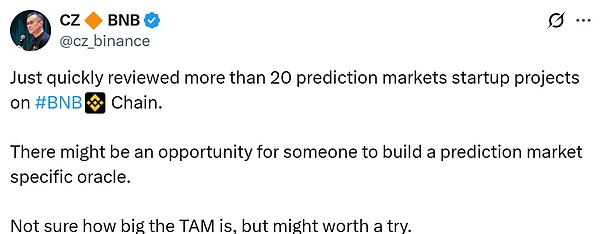
At the same time, to generate value from prediction market data and circulate it on-chain, the help of oracles is also required. Oracles can use the results from prediction markets as data sources for on-chain use. The collaboration between Kalshi and Pyth mainly revolves around this point.
Prediction market data serves as a primitive, allowing on-chain application developers to create entirely new products. Examples provided by Pyth include:
Developing futures markets based on real-world events. These protocols can use Kalshi's real-time odds as a reference, automatically adjusting prices as the source market changes.
DeFi protocols can create conditional products that respond to real-world probabilities.
Insurance products linked to political outcomes;
NFT series evolving based on election results;
Game tournaments that unlock prize pools when specific events occur.
Current Prediction Market Oracles
Understanding UMA's current monopoly position can be measured through the total value secured (TVS) in prediction markets. TVS measures the total value guaranteed by oracles, with Polymarket currently holding an 80% market share, while Chainlink is used for the remaining 20% of price markets.
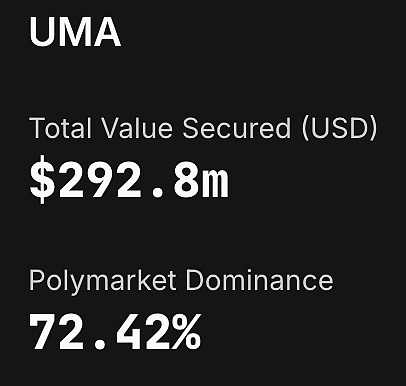
▲ source: Defilamma
In terms of business model, Stable adopts a strategy of prioritizing recent market share expansion over revenue, using gas-free USDT payments to attract users and establish payment flow. In the long run, profitability will mainly come from its consumer application, supplemented by selected on-chain mechanisms.
Besides USDT, Stable also sees significant opportunities from other stablecoins. With PayPal Ventures investing in Stable at the end of September 2025, as part of the deal, Stable will natively support PayPal's stablecoin PYUSD and promote its distribution, allowing PayPal users to "directly use PYUSD" for payments, with gas fees also paid in PYUSD. This means PYUSD will also be gas-free on the Stable chain—this will extend the operational simplicity of attracting PSPs with USDT payments to PYUSD as well.
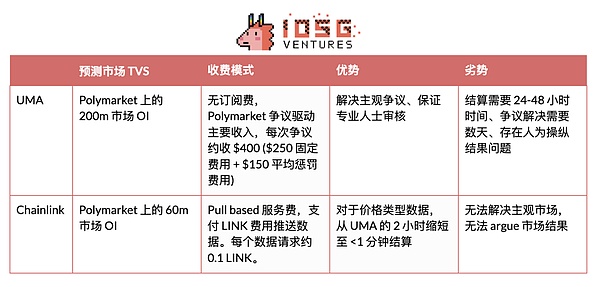
UMA
Polymarket currently uses UMA's MOOV2 (Managed Optimistic Oracle V2) to settle markets. When a market is due for settlement, it first closes, and proposers submit results. If the result is not disputed during the dispute window, it is considered the correct result. If disputed, UMA's decentralized adjudication mechanism intervenes to make a ruling.
UMA's optimistic oracle has gone through four versions, evolving from a focus on synthetic assets to adapting to prediction markets:
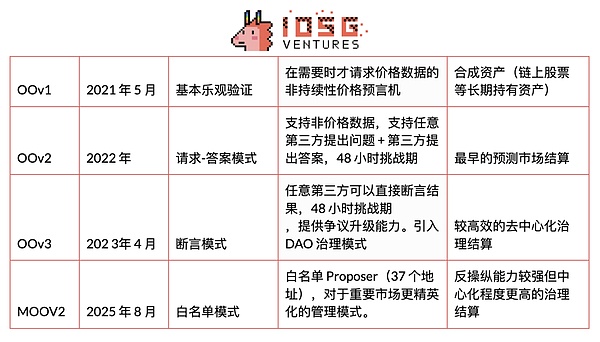
Currently, Polymarket supports MOOV2 contracts. This change was made after UMA passed the UMIP-189 governance proposal on August 6. Previously, one issue with OOV2 was that many proposals were submitted too early and without sufficient experience, often leading to disputes that delayed market settlements by several days.
The entity behind UMA, Risk Labs, announced an initial whitelist of 37 addresses, including employees of Risk Labs and Polymarket, as well as users with over 20 proposals and an accuracy rate exceeding 95%. This is currently a prototype of UMA's "elite" governance.
As the most widely used oracle, the multiple iterations of UMA also reflect its deep understanding of the use cases for prediction markets and its robust ecosystem and infrastructure. However, UMA's performance is not perfect, with issues mainly arising from two aspects:
Risk of manipulation by large players
Long result finalization times
Regarding manipulation risk, UMA's DVM (Data Verification Mechanism) relies on token holder voting to determine data results. Although there are minimum voting amounts (GAT, approximately 5 million UMA) and voting consistency thresholds (SPAT, 65% consistency) to ensure security.
However, due to the low market value of the tokens and their highly concentrated distribution, large players can easily influence voting outcomes. In 2024, on the Polymarket platform, a market regarding "Will Ukraine sign a mineral agreement with the U.S.?" was ruled by UMA as "YES," despite the actual situation in the real world being otherwise.
On-chain data shows that a single large player cast approximately 5 million UMA votes through multiple addresses, accounting for about 25% of the total voting volume; just two large players held over half of the effective voting power. This concentrated structure leads small voters to tend to "follow the large players" to avoid penalties. The penalty ratio for incorrect voting in UMA is only about 0.1%, which is very low, significantly increasing the actual risk of manipulation by large players. Currently, UMA's market cap is 100 million, but the open interest of the Polymarket market it supports is over 200 million, reflecting an asymmetry in economic relationships that gives malicious manipulators room to operate.
Secondly, in terms of result confirmation speed, UMA's dispute handling process is relatively lengthy. Any data request must go through an "active period" after submission, during which it can only be automatically confirmed if no one challenges it; if challenged, it enters the DVM voting phase, which typically lasts 48 to 96 hours. If the threshold is not met, a new round of voting must be initiated, leading to potential settlement delays of several days.
This delay issue is particularly evident in scenarios like prediction markets and leveraged products that require quick settlements. User funds are locked and cannot be reused, while also increasing the arbitrage opportunities created by information lags.
While UMA has advantages in decentralization and censorship resistance, the high token concentration and long settlement cycles pose risks of manipulation and efficiency bottlenecks. To take on a mainstream data oracle role in broader prediction scenarios, UMA needs further optimization.
UMA is currently exploring new disruptive architectures and is collaborating with EigenLayer to research and explore the development of the next generation of oracles using Eigenlayer's staking system. Additionally, it is making some new attempts in AI, with the Optimistic Truth Bot acting as a proposer agent in the prediction market. It listens to questions on Polymarket and proposes the most likely answers 24/7, significantly reducing settlement times. You can find specific markets through the @OOTruthBot Twitter account.

Chainlink
Chainlink is a well-established DeFi oracle service provider, whose product capabilities actively source and aggregate off-chain data (such as prices) from multiple sources and relay it on-chain through a network of nodes. Currently, Polymarket collaborates with Chainlink to serve price data prediction markets.
In the previous escalation manager dispute escalation system of UMA, Chainlink's routing was already involved. This means that Polymarket has long been a user of Chainlink, and the current integration makes this even more direct.
Pyth
Pyth is currently collaborating with Kalshi, primarily to relay Kalshi's data. Kalshi's data is regulated by the CFTC, so its value lies in relaying compliant data, mainly including sports and economic data. This is similar to compliant casinos selling their real-time sports event data to downstream clients.
New Players
The vast majority focus on providing verification services through AI. Currently, the role of agents is more inclined towards submitting resolution intentions; however, since AI can be online 24 hours a day, it ensures that any market, especially some high-frequency markets created without permission, can achieve effective settlements. As mentioned earlier, UAM is exploring AI participation in result proposals through OO AGENT.
A good example is XO Market from Solana. It uses AI models to extract and analyze data from trusted APIs (real-time news, sports data sources, etc.) and quickly resolves Yes/No questions through pattern recognition, optimizing for a high success rate. Some oracle projects on BSC mentioned by CZ recently are also exploring this direction.
What Opportunities Exist for Oracles
The explosion of prediction markets raises higher demands for the support range, intelligence, real-time capabilities, and incentive design of oracles. Currently, mainstream oracles still face bottlenecks: UMA's settlement time is 24-48 hours, the average dispute resolution cycle spans several days, the settlement dispute rate is high, and voting power is concentrated among large players… There remains a need for optimization regarding centralization and efficiency, and the types of markets they can support are still limited by their architecture, which may be the biggest obstacle affecting Polymarket's innovation in market types.
AI Assistance
AI can understand natural language, making it very suitable for markets related to politics, sports, or social events. In previous human judgment scenarios, there were many semantic differences and subjective factors, leading to frequent disputes. AI Oracles can significantly improve this issue through multi-source verification and neutral language models.
Anti-Manipulation
UMA's token holders are both voters and stakeholders, creating structural conflicts. Large players can sway voting results with just 5 million UMA. At the token design level, how to ensure sufficient economic security, and outside of token design, how to establish anti-manipulation mechanisms (such as real-time marking of malicious addresses, detecting group malicious behaviors, etc.) are critical.
Multi-Stage and Subjective Predictions, Real-Time Data, and Continuous Price Sources
Prediction markets have long focused on binary settlements, leading to significant information dimensionality reduction. Future socially perceptive oracles will need to access more data sources and adopt dynamic models for different data to comprehensively assess. Through discussions with DeFi projects related to Polymarket, it has become clear that there is significant design space for dynamic settlement data during market operations. Supporting more continuous prediction markets, such as real-time dynamic in-game trading for sports events, presents substantial opportunities in continuous price markets or combinatorial markets like parlays, but currently, oracles do not support this.
Permissionless Expansion and Long-Tail Markets
In the future, permissionless prediction markets will achieve asset creation rates similar to pump-and-dump schemes, and the massive demand for market settlements will render UMA's current manual review upgrade model unfeasible. How to quickly address the creation, settlement, and liquidity dispersion issues of long-tail markets could potentially be solved from the oracle perspective in a top-down manner.
Event-Driven DeFi Integration
After the integration of prediction markets and DeFi, the on-chain event probabilities can directly influence lending and derivative pricing. For example, automatically reducing lending leverage when "interest rate hike probability > 90%". This could potentially bring innovation to the DeFi space through the combination of oracles and prediction markets.
免责声明:本文章仅代表作者个人观点,不代表本平台的立场和观点。本文章仅供信息分享,不构成对任何人的任何投资建议。用户与作者之间的任何争议,与本平台无关。如网页中刊载的文章或图片涉及侵权,请提供相关的权利证明和身份证明发送邮件到support@aicoin.com,本平台相关工作人员将会进行核查。

